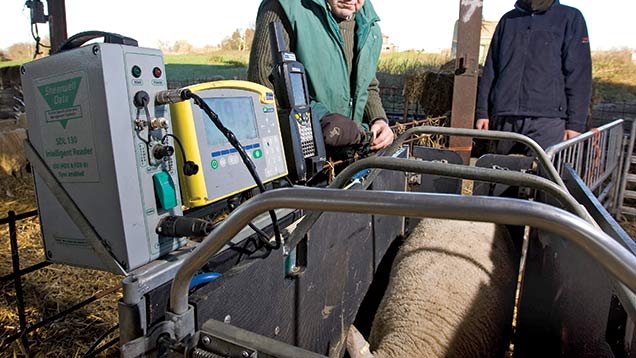Tips on record-keeping at lambing
 © Jonathan Page
© Jonathan Page When someone suggests recording at lambing, many will protest that there is already enough to do at the busiest time of year.
But providing you plan ahead and keep things simple, record-keeping at lambing can be hugely informative, says independent sheep consultant Catherine Nakielny.
Record-keeping should be shaped by the financial drivers of the business. For sheep producers, the number of lambs reared is an important component of flock profitability, and measuring and understanding lamb losses should form the basis of recording at lambing.
It is important to think carefully about what you want to achieve from the records and not over-complicate the process.
Individual vs flock
For pedigree flocks, record-keeping needs to be done on an individual animal basis, but for many commercial flocks, simply getting a good understanding of flock performance should form the basis of a recording system.
When recording individual animals, using EID hand-held readers will save time, reduce mistakes and be a cost-effective solution, whereas on a flock basis written record-keeping can be adequate either using a notebook or a mobile phone to record relevant details.
This is particularly important when there are a number of staff working with a large flock and they will each need to be able to help with the record-keeping process.
For commercial flocks the focus of record-keeping at lambing should be on measuring and understanding lamb losses (see below for an example).
|
Date |
Birth type |
Before lambing |
During lambing |
Within 24hrs |
After turnout |
Comments |
|
10 March |
Single |
|
|
✓ |
|
Large lamb |
|
12 March |
Triplet |
✓ |
|
|
|
Small |
|
12 March |
Twin |
|
|
✓ |
|
Watery mouth |
Lamb losses
Recording lamb losses in outdoor flocks is equally as important, but there are likely to be more missing animals identified at a later date.
Don’t forget about the lambs lost when a pregnant ewe dies. Scanning is actually a good time to start the process.
With the total number of lambs scanned known, the first step is to compare performance with targets set and then set a target for lambs reared.
Nutrition, health and ram management should all be reviewed in light of the results obtained.
Some lamb losses are inevitable, but understanding when they are occurring will help determine whether improvements could be made to nutrition, health and management.
For example, allocating more space to first-time lambers might lead to better maternal behaviour at lambing.
What about recording individual ewe performance? There is considerable variation in the performance of ewes within a flock and the question is whether this should be recorded.
With the majority of ewes now EID-tagged, this is an option for many flocks, but there is a time cost to this.
Will this information help the financial performance of the business and outweigh the cost of collecting the data?
If not, there is the option of using a simple system of ear notching or adding a ‘black tag’ as a management option.
Five top tips for record-keeping at lambing
- Speak to your vet ahead of lambing to seek their advice on what records to keep and how they can be put to good use.
- Make everyone involved in lambing aware of the need to keep records.
- Keep it as simple as possible and consider innovative ways of record-keeping, such as audio records on a mobile phone.
- Don’t forget to review the records in good time after lambing – based on the results, changes can be made in time for next year’s lamb crop.
- Think of recording lamb losses as an exciting opportunity to improve flock profitability rather than a depressing exercise.
